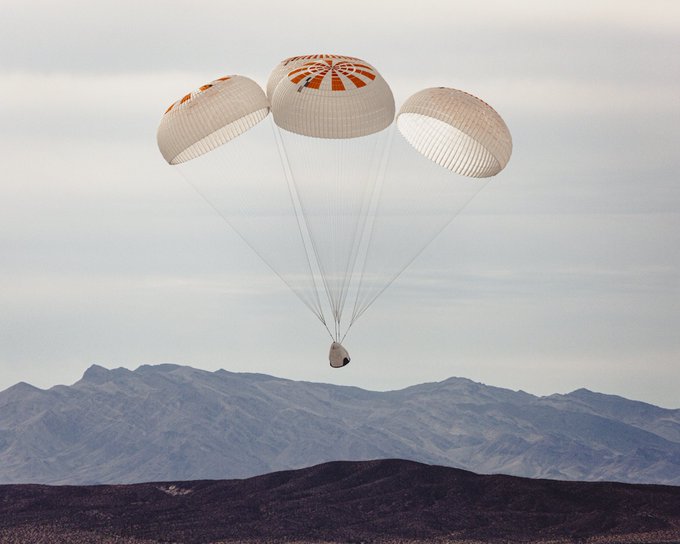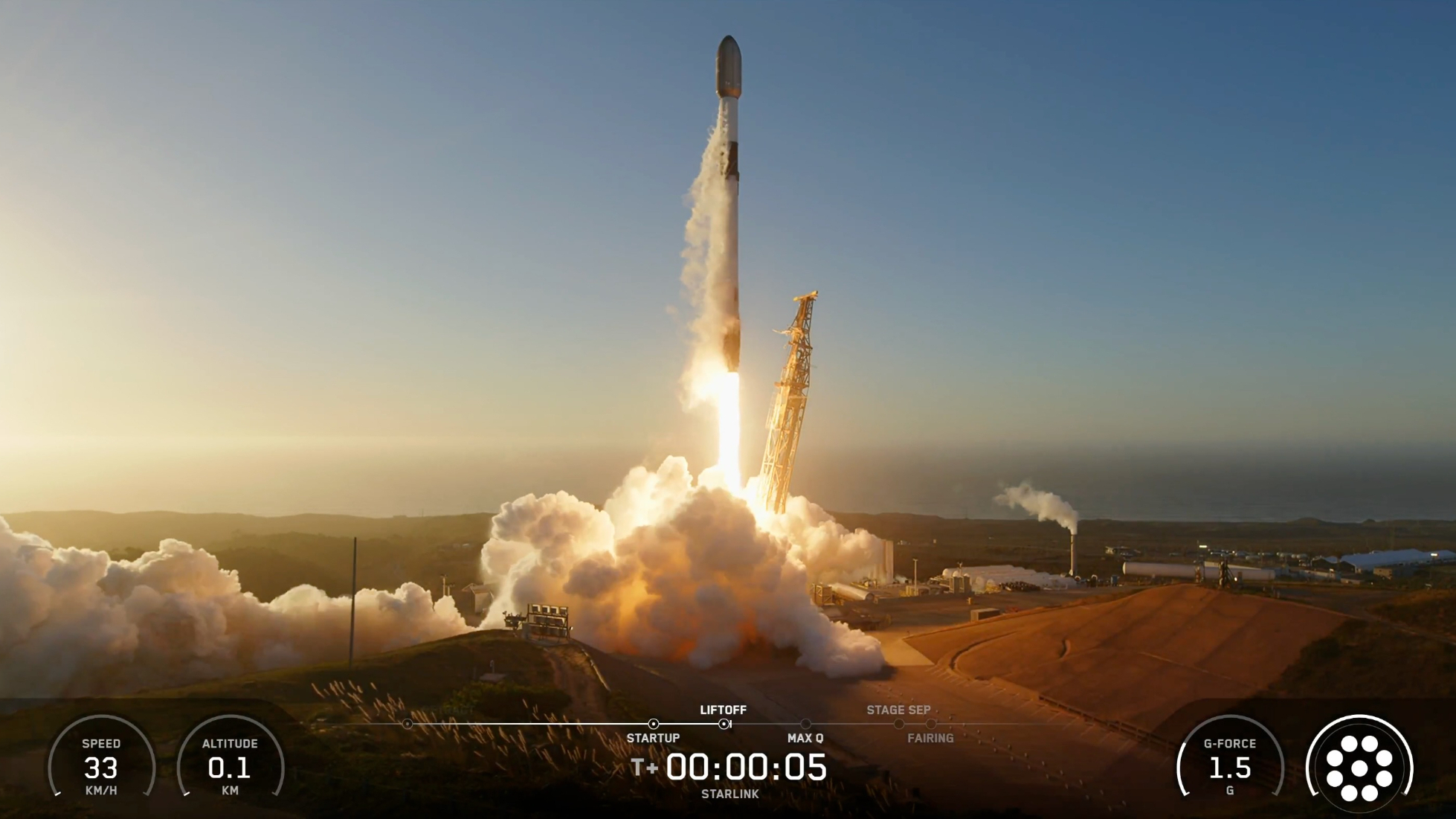Revamped SpaceX Crew Dragon Parachute Aces 10th Test in a Row (Photo)

SpaceX has taken a big step on the road to human spaceflight.
The revamped "Mark 3" parachute system for SpaceX's Crew Dragon astronaut taxi just passed its 10th test in a row, company representatives announced via Twitter Monday (Dec. 23).
SpaceX is developing Crew Dragon to get NASA astronauts to and from the International Space Station (ISS). The capsule's previous parachute design, the Mark 2, had suffered some issues during recent drop tests, so the company decided to switch to the upgraded Mark 3.
In Photos: Take a Tour of SpaceX's Crew Dragon Spaceship
Yesterday the team completed the 10th successful multi-chute test in a row of Crew Dragon’s upgraded Mark 3 parachute design – one step closer to safely launching and landing @NASA astronauts pic.twitter.com/nfFjnKygB4December 23, 2019
The new version has stronger lines and a stitching pattern that distributes loads better, SpaceX founder and CEO Elon Musk said in October.
"We're hopeful to have the first successful Mark 3 drop test within a week or two, and then there'll be a steady cadence of tests thereafter," Musk said back then. "We certainly want to get at least something on the order of 10 successful tests in a row before launching astronauts."
That milestone, however firm it may be, has now been met.
Breaking space news, the latest updates on rocket launches, skywatching events and more!
Also in the bag is Crew Dragon's uncrewed flight test to the ISS, a six-day mission called Demo-1 that the capsule pulled off this past March. But there's another big milestone coming up — the in-flight abort (IFA) test, during which Crew Dragon will demonstrate its ability to get astronauts away from danger in the event of a launch emergency.
The IFA is targeted for Jan. 11. If everything goes well on that day, SpaceX can likely start prepping Crew Dragon for a crewed flight test to the orbiting lab.
Boeing is also developing a crew capsule, called the CST-100 Starliner. This vehicle just flew its version of Demo-1, the uncrewed Orbital Flight Test (OFT). But Starliner suffered a problem with its mission timer shortly after launch on Friday (Dec. 20) and ended up in the wrong orbit to rendezvous with the orbiting lab. Starliner did manage to land safely Sunday (Dec. 22), ending a truncated version of the planned eight-day OFT.
NASA is funding the Starliner and Crew Dragon work via its Commercial Crew Program, which seeks to bring an orbital human spaceflight capability back to U.S. shores. The nation has been dependent on Russian Soyuz spacecraft to gets is astronauts to and from the ISS since the space shuttle fleet was retired in July 2011.
- SpaceX's Crew Dragon Demo-1 Test Flight in Pictures
- SpaceX's Starship Project Not Affecting Crew Dragon Flights for NASA, Elon Musk Says
- SpaceX Fires Up Rocket in Prep for 1st Astronaut Launch with Crew Dragon (Photo)
Mike Wall's book about the search for alien life, "Out There" (Grand Central Publishing, 2018; illustrated by Karl Tate), is out now. Follow him on Twitter @michaeldwall. Follow us on Twitter @Spacedotcom or Facebook.

Join our Space Forums to keep talking space on the latest missions, night sky and more! And if you have a news tip, correction or comment, let us know at: community@space.com.

Michael Wall is a Senior Space Writer with Space.com and joined the team in 2010. He primarily covers exoplanets, spaceflight and military space, but has been known to dabble in the space art beat. His book about the search for alien life, "Out There," was published on Nov. 13, 2018. Before becoming a science writer, Michael worked as a herpetologist and wildlife biologist. He has a Ph.D. in evolutionary biology from the University of Sydney, Australia, a bachelor's degree from the University of Arizona, and a graduate certificate in science writing from the University of California, Santa Cruz. To find out what his latest project is, you can follow Michael on Twitter.
